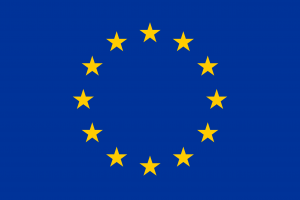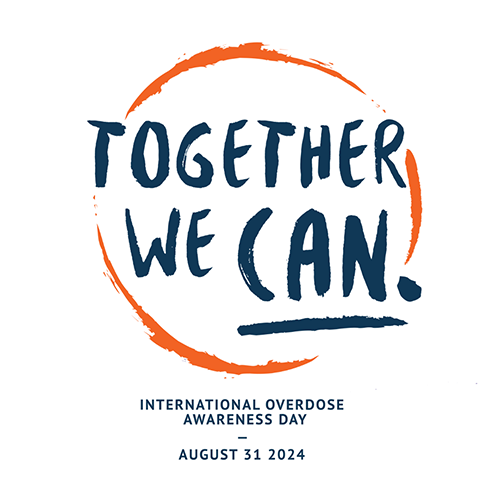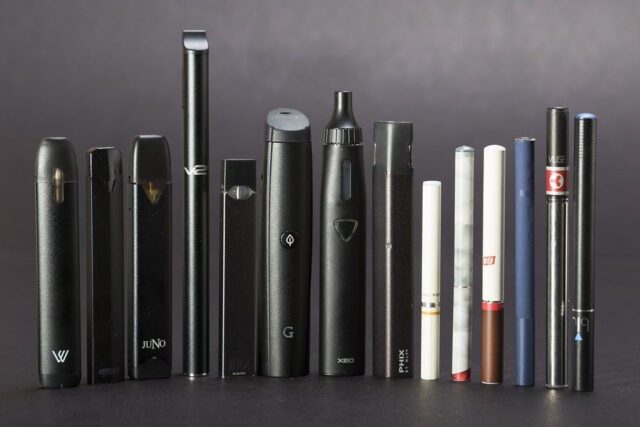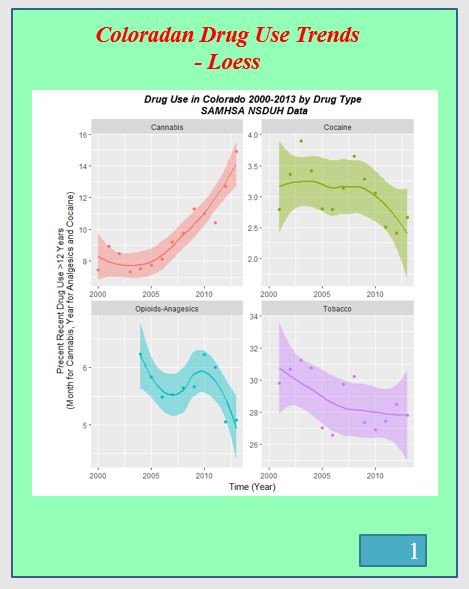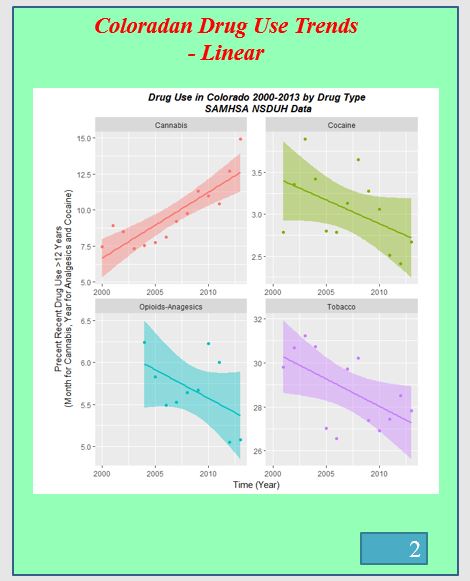10Sep2024
In this special episode of the Pathways 2 Podcast, recorded live at the National Prevention Network (NPN) Conference, we bring you two insightful conversations with leaders who are making a significant impact in the field of prevention.
First, we sit down with Ben Stevenson, who oversees prevention and harm reduction services for Montgomery County, Maryland, and also runs his own consulting firm, Bess Consulting LLC. Ben shares his innovative approach to integrating youth empowerment with harm reduction, his journey in building a successful Youth Ambassador Program, and the challenges of overcoming stigma and navigating county government to drive meaningful change.
Next, we hear from Steve Miller, a prevention champion, podcaster, and man in long-term recovery. Steve takes us through his personal and professional journey, highlighting the powerful role music has played in his recovery and prevention work. He discusses how music serves as a muse, guiding his work and helping others find their path in prevention.
Whether you’re a prevention professional, a community leader, or simply interested in stories of resilience and innovation, this episode is packed with practical insights, inspiration, and a deep dive into what it takes to make a lasting impact in our communities.
Key Takeaways:
- The power of youth-led initiatives in prevention and harm reduction.
- Strategies for overcoming stigma and building community buy-in.
- How music can influence behavior and serve as a tool for prevention.
Transcript:
Welcome back to another episode of the Pathways to Prevention podcast, where we shine a light on the people stories and strategy’s making a difference in the field of prevention. I’m your host, Dave Closson and today I am excited to bring you to insightful conversations recorded live from the National Prevention Network Conference, where the theme was shining a light on prevention.
In this episode, you’ll hear from two exceptional leaders who are driving impactful change in their communities and beyond. First, we have Ben Stevenson from Maryland who oversees prevention and harm reduction services in Montgomery county. We’ll also running his own consulting firm. Ben shares his experiences, challenges and successes in empowering youth. And integrating prevention with harm reduction in innovative ways. Then. I had the opportunity to sit down with Steve Miller. A true prevention champion. Long-term recovery advocate and fellow podcaster. Steve takes us on a journey through his work in prevention. The powerful role that music has played in his life and in his recovery. And how it continues to inspire his mission to help others. These conversations are full of wisdom, practical insights, and inspiration for anyone involved in prevention work. So let’s dive in. And hear from these incredible prevention leaders.
The Vision, a world where all people live free of the burden of drug abuse. This is the Drug Free America Foundation’s Pathway to Prevention podcast, where we are committed to developing strategies that prevent drug use and promote sustained recovery. Thank you for not only tuning in, but your continued support and efforts to help make this world a better place.
We hope you enjoy this episode.
Alright, so, first off, coming to folks here from the National Prevention Network Conference, would love for you to just introduce yourself.
Okay. All right. So I’m Ben Stephenson from Maryland. So I work in, oversee, prevention of harm reduction services for Montgomery County, Maryland and then I also own a best consulting LLC. All right, rock. And so tell me a little bit about the work that you do, whether it be through your consulting company or the harm reduction work, what do you do?
Sure. So, on the prevention side, oversee, all of our prevention, education and awareness efforts. So that includes community awareness campaigns, efforts around drug take back. Also oversee a youth ambassador program. So, we have used, we pretty much empower young people to use their voice to educate about the dangerous substances, mental health, wellness, and in advocacy, we train them in advocacy.
And then on the harm reduction side, oversee our Narcan training and distribution efforts. A syringe services program as well as our efforts to distribute, fentanyl test strips, xylazine test strips, currently working on expanding harm reduction services into vending machines, and other avenues to try to, you know, meet people where they are and support people until they’re ready to pursue their treatment and recovery.
And then on the consulting side, I’m a SAPS trainer, so I was a part of the consultants that, update the SAPS curriculum. So, now it’s the SPF application for prevention success training versus the substance abuse prevention skills training. I also, also an ethics trainer, and then I also do, you know, conference presentations.
But this week, I decided I just want to be a participant. So, you know, participating in the NPN. Taking it all in. Yeah. All right. You got a lot of work. You’re doing. I can only imagine that through doing that work, getting it started, maintaining, sustaining, growing that work. You’ve encountered some, some challenges or barriers.
What are a couple that come to mind? Yeah, I think that the main challenges you can think of are related to maybe stigma, still stigma around substance use. So people not necessarily understanding, how prevention or how harm reduction works. How they can be married together in a sense to build a stronger system.
I think it’s been a lot of like education on my end and my team’s end to try to educate people on how this, how it could look, how it could work together versus, hey, you have this funding. They have that funding and then you don’t really, you know, communicate. Then of course, you know, me working in county government, sometimes you have some extra hoops and hurdles to work through.
To overcome. Which is of course, you know, a challenge within itself. But, you know, you just still, you get up every day. You fight the good fight and the, and the joy of prevention is that it’s always changing. It’s never the same. So you just adapt to the times and figure out how you can be innovative and help your community.
What are some of those successes that you’ve seen? I think for me as of late, so, we’re moving into our fourth year of having a youth ambassador program. in totality, I’ve been with the county for 10 years. It’s something I’d always wanted to do because I knew the power of the youth voice.
So giving them that space, I think has been very rewarding for me. You know, working with adults, you can kind of burn yourself out, but working with kids, they energize you, right? So I think this past couple of years, you know, the youth really were in tune with, You know, what we’ve been experiencing as a country around opioids and overdose deaths and wanted to do something.
So, you know, I worked with a group of young people who wanted to change policy within the within the school system so that you could carry Narcan within school. So you, you can carry Narcan in our school system without feeling as if they’re going to get punished. Right. Then also all of the schools have are equipped with Narcan all the way down to the elementary school.
Then this past year, youth wanted to actually train their peers on identifying the signs and symptoms of an overdose, how to respond, and how to administer Narcan. So, we trained 11 of our youth ambassadors to train other, their peers, and they trained about 300 youth last year and adults. So, I think, you know, that has been a, a major success because now the school system has seen it and they’re like, Hey, we want to make sure that you have youth ambassadors from every high school in the county where there’s 26 high schools and I’ve had representatives from maybe 11 of them.
So trying to get across the entire county and then build up the infrastructure to where you build a pipeline of those youth having that same message from the middle school level all the way to the high school. So once the high school situation gets solidified, we can filter it down to the middle school level.
I’ll call it a 10 year journey that you’ve been on and still are on to get the youth ambassador program to where it is today What might be some tips or some things you’ve learned that you can share with our listeners? Yeah, I think one challenge that I ran into initially was trying to establish smaller youth ambassador chapters at each school Which of course in those situations Me being in such a large jurisdiction Those situations is hard because you got to have a sponsor at the school to oversee that.
So that was a challenge within itself. So I realized, okay, maybe I need to just pull it back and just do something countywide. knowing that, okay, you got youth from all over the county. How do you want to make sure they have the ability to meet without having to drive somewhere? So, luckily zoom has been, you know, or, you know, I think Google meets all kinds of platforms we use initially.
Have been phenomenal because it helps to keep youth engaged. but then also giving them the power to control it to not just having the voice, but they it’s their baby and let them know that, hey, we’re only going to be successful based off of you. I’m just here to support you and to put some fiscal, you know, money or put something behind you to support the strategies and initiatives you want to do.
So, I think having that youth co-chair model, Having youth officers, them leading the meetings, them pretty much recruiting, doing all those different things has been, you know, phenomenal. I just, I just sit back and just kind of watching it manifest, you know? Yeah, yeah. Well, I heard what sounded like a pretty good piece of wisdom, but you kind of just rolled right off your tongue.
You had a vision, the local chapter’s vision, but then you realized that that wasn’t the right path forward and you, you adjusted course. All still within that grander big picture vision of the youth advisory that not afraid to pivot. Right. Of course. And I think I learned that, from, you know, experiences with like larger organizations like CADCA and then seeing other organizations within my state that were doing youth initiatives that were maybe that jurisdiction wasn’t at the size of mine, but saying, Hey, They can do it.
We can do it too. and then just getting, you know, upper leadership to believe that it could be done. And now that they’re seeing it, they’re like, wow, how can we be a part? What can we do to support? Like, what do you need and things like that? And so, I think that has, you know, being able to put prevention in a place of prominence is important.
because you know, we have the, what the Institute of Medicine’s continuum of care. But sometimes people still don’t understand prevention because it’s not providing those immediate results. Right. And so, if you can see, if you can show some, some of those mild substance moments, you know, from, you know, kids sharing their experiences in the program from them sharing what they learn, to, you know, county leadership, seeing them present and articulate themselves in a way that they’re just like, wow, these are some and even trying to get, you know, to the kids who might be on the fence of if I want to use or not, Hey, this seems pretty cool.
And I can get community service hours and, you know, writing recommendation letters for college. And we’ve gotten to a place of giving honor cords for graduating seniors that could wear graduation. So when other kids are seeing it, they’re like, Hey, I want to be a part of that. I think that kind of speaks to.
The importance of like, not only addressing risk factors in our community, but also addressing those protective factors. So that positive opportunity to belong is important because I, I mean, I can see it, you know, I can see the importance of it, right? Yes. So I’ve got, I’ll say I’ve got four questions left.
Okay. You touched on two things that I hear from folks in the prevention field all the time as far as barriers, challenges, or how the heck are we supposed to do that? Yeah. One getting upper leadership on board, but then also the, the buy in and the, the youth taking ownership. Yeah. What kind of insights or experience could you share there for our listeners?
Yeah. So, I learned a lot from, you know, just some time working with, with CADCA and a really good friend of mine oversaw like the youth leadership initiative and that mantra of youth, youth led, but adult guided. And I really believed in that because. I could see how like the, like the youth that were working with, with CACA in those spaces, they were, they were very bright, phenomenal, and they were leading educational sessions, things like that.
And I was like, I know I have kids in my, or youth in my, in my county that can do that same thing. I just have to find them. it’s, it’s initially it kind of happened organically, but then, you know you started reaching out, Hey, I’m doing this project on such and such. And it’s related to fentanyl or whatever.
And I’m like, well, why are you not in my program? Like, what have you been doing? And then they’ll sign on and they like, Hey, I don’t know why I haven’t been here, but I’m happy to be here now. Right. Yeah. So I think really just understanding that it’s not going to happen overnight. You got to just continue to just keep, keep fighting a good fight.
Eventually those things that you want to change and manifest in your community will happen. Like Rich Lucey from DEA says prevention is about the long game. Yes. 10 years running. Yeah. I’m curious if you have a, a good story that really shows the impact of your work with the youth and stigma, whatever it may be. Just a story that talks about the, the impact. Yeah. So I used to get requests to, do presentations at high schools, right? And you never really know, you never really know the impact of those presentations because you might be presenting to like a parent group or something like that.
Right. And so, we eventually got to a place of wanting to train all of our bus operators in the lock zone administration so that they can have Narcan on the bus and things like that. Just in case overdose happens on the bus. Well, not knowing that one of the administrators or one of the managers of supervisors over the transit system was in one of my presentations at the high school because their daughter was a student at the high school.
it was a full circle moment because he basically said to me, he was like, a lot of the things you share that night helped me and my wife because our daughter eventually dealt with substance use disorder. But we knew what to do to help support her and navigate her through that space.
So that really like it was a real like aha moment to me that, you know, what we’re doing is working. And yes, if someone does go down that path, you still want to make sure you give them those tools and maybe you can help bring them back in and keep them safe and keep them alive.
Right. So, I think that was just, I mean, there’s been a lot of moments, literally you thought it gave me goosebumps. I can feel that, one last question, one last, but I promise, I promise, you mentioned earlier, you said it so eloquently about putting prevention in a prominent place.
The theme of this conference is shining a light on prevention. So can you give us, you know, a description of what does that, what does that mean to you? Yeah. I, I really feel like there’s a lot of opportunities for prevention out here, whether it’s through not only, you know, pursuit of grant fund is, but I think that’s mobilizing to say, Hey, you know, block grant funds haven’t changed in the past 20 years.
What? Maybe we need to advocate, you know, to get that shift. But I think making sure that we’re at the tables. of those who are in control of funding, right? And so, I think for me, I’ve been fortunate enough to be at some of those tables where, you know, we are gaining access to some of the, like the opioid abatement funds to build up the infrastructure of prevention in the county and to build up harm reduction in the county and things like that, which, you know, you know, treatment services and crisis services and other service areas, they’ve always had money to do the things that they needed to do.
But prevention never really had that. So I think, you know, continuing to, you know, do the work, advocate, you know, show, you know, positive results and get to those tables is important to help us get to that prominent level that, hey, we’re part of the continuum or the spectrum of services as well. We need to be funded in a way so that we can prevent all those people from having to go to treatment to him and experience recovery.
Right. So I think Not only, you know, advocating for ourselves, but also building up those allies to help us advocate, to show the power of prevention because it’s definitely a place for us. and, you know, we’re all in the same business of trying to, you know, promote optimal wellbeing in our communities, right?
The themes that I heard were persistence, perseverance. together. Yeah. And, and I would say a twofold listening and learning. Yes, of course. Cause I mean, we might be the experts on the process, but of course we’ve got to connect with those and collaborate with those people in the community because they’re the experts on the, on the story of that community.
We can’t really, you know, talking to a lot of my colleagues, we, we talk about shifting from being implementers to coaches or mentors so that, you know, you can sustain some of the efforts and outcomes that are in the communities, you know, so, so that’s the hope and goal, right? Yeah. All right.
What would be one final takeaway call to action to leave our listeners with? Yeah. I’ll just say that, you know, my experience in this field is that It’s important to network because you can always learn from somebody else. Something innovative, something creative that somebody else has done in another part of the country that you could maybe implement in your, your area.
and then always just, just making sure you stay abreast and up on top of, you know, language and evidence based practices and all those different things. Because I’ve only been in the field for 18 years and it’s changed exponentially over the course of that time. So. Just saying, staying abreast of that and staying engaged, mentors, having a mentor, I have multiple.
And if you feel burnt out, make sure you take care of yourself. Mom’s always said, if you don’t take care of yourself, you can’t take care of somebody else. So All right. Folks. That was, was an enlightening conversation with Ben. Who’s truly leading the way. In integrating prevention and harm reduction in his community. And I just loved hearing about his work with youth and this commitment to breaking down barriers is, is inspiring and really does offer us some valuable lessons for, for everyone in the prevention field.
But now we’re shifting gears to another powerful voice in prevention. Steve Miller is not only a longterm recovery advocate, but also someone who’s found a unique way. To incorporate his passion for music into his prevention work. Steve’s insights on the role of music and shaping behavior. And his own journey through recovery are both thought provoking and motivating. So let’s dive into my conversation with Steve Miller.
All right, folks, bringing you another conversation from the NPN conference. Where the theme is shining a light on prevention, and I’m honored to be hanging out here with the one and only Steve Miller, who is a prevention champion, prevention podcaster, man in long term recovery and is sharing his voice, his story, his wisdom to help make positive change in this world.
So without further ado, Steve, great to be talking to you again. Hey, thanks, Dave. I’m glad to be here. Yeah. Oh, all right. So we’re jumping right in. We’re jumping right in. I don’t want to, to really tell your background and why you work in prevention now, but I’m hoping you might be able to, to give us, we’ll say a cliff notes version of highlights real of.
What led you to working in prevention? That’s always an interesting question, Dave. And one of the things that I’ve realized, and this has been in the last couple of years, that I would have said, oh, there’s just been so many random things that have happened in my life. And then when I sat down and kind of looked at them on a timeline, I realized it was actually a straight line.
And it wasn’t something that was so haphazard. It was actually what was intended all along for me to be doing. And, and part of that is, is the natural evolution. As you said, I am a person in, in long term recovery. And so I’ve been working in either the treatment field or some variation of prevention for three decades now.
And so that’s really been my life’s focus is my own recovery. And, and then what I’ve learned in that journey is how do I kind of. Find my work through who I, who I really am. And one of the common denominators through all of this, before I was in recovery, since I’ve been in recovery and now in the prevention field has been this.
I call it the muse leading me through song, if you will, and I had to learn the prevention field. I didn’t know it existed. I didn’t know there was a science. I just kind of fit the description of what they were looking for as a new staff member. And I thought, Oh, I could do that. And it didn’t take me long to figure out that.
My guiding force through prevention is believing that by finding, we find our work through ourselves and when we do that kind of strengthens our commitment to do this kind of work, but it also strengthens the workforce because just like you, you’ve kind of found a path that leads you in the work that you’re doing.
But you started in prevention and I found a path by starting in prevention, learning the science, learning how the strategic prevention framework operates, all that kind of stuff. Then I stood back and I thought, does music belong in? And lo and behold, that’s kind of the answer has been, Oh yeah, it does.
Because it’s been such a powerful force in my life. I thought it’s got to be added into what I’m doing in prevention, added into your story, because like you said, it, it’s been a muse behind that straight line to prevention. So let’s just talk about that. Let’s, let’s go right there and talk about. Music.
You say it’s been your muse. What do you mean by that? How has it been your muse? People ask me when I talk about it, they go, so what instrument do you play? And I’m like, I play the radio really well. And if I want to, I can put a record on the turntable, but I am not a musician. I have been someone who has been an avid consumer of music like a lot of people since I was an adolescent.
And I tell a whole story through a training that I do about how music shaped my life, but how it shapes our lives. And then I just overlay that in the, into the prevention field, because there’s a lot of research that shows how music influences our choices. And when we’re adolescents and we’re trying to figure out who we are and what we want out of life and where we’re going to go, we’re very susceptible to outside stimulus and peer pressure is really what that comes down to.
And music can be a part of that music. Plays a part in helping us form our identity because we have such this creative bond with music. Everybody can think for themselves, what was that song that was the soundtrack to your life as an adolescent? Did you dance to? Who’d you fall in love to? Who’d you hang out with your buddies?
You know, what was the, what was playing in the background? And we all kind of have that somewhere inside of us. My choices happen to be very detrimental and that was a part of my addiction. And then when I found myself in a recovery process, it was music again, that kind of just woke me up and made me realize there are messages in all of these songs that are beneficial to who I am at this particular point in my life.
So that we’re kind of a meditative process. But then when I got into prevention, I started thinking, how could, how could my experience And how could the research that supports my experience be beneficial to a message that would target an audience that’s either adolescents, or I talk about how music is a part of the workforce development in my life, music, really.
I start my day with it and I probably end with it, but I start most days with a song. And I mean, to prove that to you this morning, I woke up with a song in my head. And I sat down in the, before I even really get out of bed, I write kind of a journal entry about that song and what it means to me and how it kind of feels like it’s guiding me for the day, what that intention would happen to be.
And I’ve just followed it because it’s fun. I feel like I’m kind of the only one that does it. I’ve shared these ideas with other people, but been very insightful for me. And, and, I still provide training and technical assistance through prevention to lots of audiences, but there’s this little niche that I talk about where the music kind of fits right in there, I’d like to, to zoom in and.
Wanna really. Invite you to share a great example of, of how music played a part in your addiction. You said you kind of, it kind of kicked you off and had a prominent role there. Can you give us that, that kind of that, that clear example, like what happened? I mean, think, and I was trying to get, we were talking about this for the, for the audience to kind of.
I was how to Get this in their mindset as well. If you think about a song that you hear and when you hear it, you’re kind of transported to a time and place in your life. Now, I have a song that always takes me to exactly the same memory and it’s, it’s uncanny that I actually, it was, it’s, it’s a song by ACDC and it takes me to the lake outside of the town I grew up in.
And it’s not just the song and the, and, and the association of that time in my life. I actually, I’m telling you right now, it’s almost like I can feel the air around the lake on my skin. It, it’s like, It’s being transported to that memory and reliving it again. And that’s how powerful music is. So I ask people all the time, what is that song for you?
And why do you have such a strong association with it? Maybe it’s because you fell in love, you know, that kind of thing. Maybe it’s the first dance you ever had, because I have that story as well. But there was a time in my life when if you’d have said, Oh, Steve, you’ll smoke cigarettes, or you’ll drink alcohol, or you’ll use some kind of substance.
I would have thought you’re, you’re crazy. Cause I was like any other kid that I grew up with. I played sports, hung out with my friends. We rode our bikes everywhere. I grew up in the 1970s. Anybody that’s listening probably knows what that was like. And one day, I mean, I know that it was a Saturday. I know that it was eight minutes after nine o’clock in the morning and an older brother To one of my friends came into the room and put on a song and in that moment, everything about what I thought life was changed.
And the song to me was rock and roll. And I thought it was about something that I wanted to pursue. And it was really about. In that moment, to me, it was about using drugs and alcohol. Now, I had some experience with it before then, but after that moment, everything changed. I mean, it was like a slipper slide.
It went downhill quick. And then years later, when I got curious about this topic we’re talking about, I got to looking at that specific song. And I realized that song is not a pro drug use anthem that I thought it was. It’s actually a very thought provoking message to one of the singer’s bandmates because he was concerned about his own health and his own life because of his substance use.
And I, so I point out to the audience that as adolescents, we kind of make a lot of things up based upon what we want to hear, because we’re looking for that, that identity, who are we, where are we going? How do I feel those kinds of things? And a song can slip right in there. And I’m not unique in that fashion.
I have talked to several people in the last 10 plus years that have told me stories about how they heard a song and made a decision in the moment. And sometimes I’ve stood back and said, you did what, and then they explain it to me and it makes perfect sense because of the time of their life, what they were experiencing, those kinds of things.
And so that song really impacted my life. In a very detrimental way, some people, it impacts their lives in a very positive. And I’ve talked to some that it, a song shaped their life in a way. It is very financially rewarding. So I think it’s across the board. The question is, is do we ever, do we ever really listen to what that song is actually saying to us or how we feel about it or what it means to us?
And I think that’s the key is really being in the moment and aware enough to know that this song may say one thing, but I may take it another way. And then when we’re adolescents, it might behoove us to ask someone, an adult or someone we trust. This is what I hear this song saying, as opposed to this is what I think this song is saying.
So getting some of that feedback and checking that out before I make some sort of a critical life decision. And that’s basically, we talk in prevention about media literacy. So that could be printed or television ads or radio or social media, whatever that looks like. I just put it under the heading of it’s really about music literacy and understanding the impact it has in our lives.
You just made me kind of understand about myself. There’s a lot of songs that I love and they make me feel a way when I hear them and they take me back to those moments like you talked about, but I can’t say I know all the lyrics. I may only know just the chorus or one line, but I love these songs because of the memories I have, the feelings I have associated to them, like the, for my, my wedding.
I asked for a, I call it a secret first dance. I wanted to dance a specific song before we went into the actual like dinner afterwards. And so it was just my wife and I, and the photographer and that’s it. And I don’t know the lyrics to that song. I know the title of it and the artist, but that’s it.
But I love it whenever I hear it. Come on. It takes me right back to that moment. We’re having our moment. Yeah. Yeah. But I don’t know the lyrics. And what’s interesting is I watched it was. A reel on one of the social media channels just in the last couple of days. And it was something that said as a Gen Xer actually listens to the song and, and you can see ’em kind of keying into what the message is and being like, oh, I didn’t realize that’s what that song was saying.
Right? Mm-Hmm. . Mm-Hmm. . And, and that, that fits the bill. Some of us know that hook and some of us know just the, the feeling that we get. That’s associated with the song, but there’s a lot of research out there that says, even if we’re not consciously aware of the lyrics, some part of our brain is picking up on the messaging of that.
Now, whether that’s detrimental or whether that’s inspiring or whatever that looks like is different for the individual. No two songs are the same. But like I said, I hear a song and, and the song I heard this morning is one that I really only know the hook to, like you just said, so I Googled the whole lyrics and then I sat down and wrote a little passage about it, but I have had experiences where I woke up and I had that same thought, you know, some, some, some statements going through my head and I’m like, I don’t even know if that’s a song and then I’ll say, I’ll Google lyric and then whatever it is I’m thinking, and if it comes up as a song and I yeah.
I’m amazed. There’s been times when I’ve done that and I swear to you, I have no recollection of ever hearing that song in my life. Now, where did I pick it up? Why did it come to me in my sleep? I don’t know. But I am fascinated by the fact that when I’ve been led to understanding that there’s some something stuck in my subconscious, if you will, and it ekes out when I wake up in the morning and it’s a song that I picked up somewhere along the way, I just don’t know where or when or why, but that’s why the why is like, well, why is this showing up?
And then I try to kind of analyze it, kind of meditate on it, gives me a way to set my intention for the day. And sometimes I might share that with other people if I find it a profound insight in some way or another, I’m going to draw a connection that might not be there or not, but I’m reaching for it.
And I know and trust that you’ll be like, ah, Dave, there’s no connection there. But I talk a lot about the power of storytelling and prevention, treatment, and recovery, both for the, the listeners, but then also for the actual storyteller themselves, but songs. They have the story element, they have the story factor too.
So wouldn’t that be sort of one in the same? I think so. I’ve, I’ve heard people talk about that songwriting really is a gift because I’ve seen interviews with artists or authors that have written books and they’re like, they can tell a story in three and a half, four minutes that takes me a chapter or two to tell, but they can synthesize it down in a way.
And that’s the part like that led up to anything really being, you know, like understanding how music impacts me emotionally as an adolescent, because my parents played music when I was growing up, but the songs that stick with me to this day are the ones that tell a very vivid story. And so I’m kind of a storyteller of sorts myself, but I like a song that tells a really powerful story.
So as an example, The first song that I really can remember, I wanted that song so bad. And it was a, it’s a singer named Jim Croce. And the song is bad, bad Leroy Brown. And I was a nine year old boy. And I mean, bad, bad Leroy Brown was the baddest man in the whole damn town. Badder than old King Kong and meaner than a junkyard dog.
And to a nine year old boy, it’s like. I want to be, you know, like to me, it was like the he’s respected and, you know, he’s a tough guy and, you know, kind of things that as a nine year old boy, you’re playing G. I. Joe and playing army with your buddies. You know, you’re kind of wanting to be that masculine kind of identity.
And that was what bad, badly Roy Brown was. But it’s a very vivid story song. And a lot of Jim’s work is story songs. And so I’ve always sought those out. I like all kinds of music. I don’t pick a genre, but the ones that seem to rise to the top are the ones that tell me a story about something that I don’t understand.
And I’m, as I’m explaining this, I watched a documentary about a group and, and they had on there as a guest, he was a professor of music of some sort from a university. And he said, I had a student that did a, master’s thesis on this particular subject. And he spent all semester long or all year long, however long that takes and wrote this thesis.
And he said, this singer captured the same essence in three and a half minutes. That’s the power of a song. And if you can deliver that and people can really kind of onboard that, it can be powerful in a lot of ways, or it can be, like I said, it can be, it can be harmful in ways. So it just depends on the listener and how you.
How you perceive it, how you receive it and, and how you may or may not act on it. I want to ask about a powerful song that if I remember correctly, as part of your journey as to where you are today. So if I, if I throw out the Beatles song help, where does that take you to in your life? Well, that’s the turning point.
I’ve actually written a short story for a friend of ours that’s doing a collection of legacy stories. And I kind of tell the story through two things, the, the song that was kind of the gateway into substance misuse. And then it was the song by the Beatles help that was kind of the book into it. And it was the one that really kind of illustrated to me that songs spoke to people in very unique ways.
And it was a Catholic priest that was talking about the fact that, the lyrics of a popular song could be the catalyst to get someone’s attention about their addiction. And I remember thinking in that moment, wow, I wonder if that would happen for me. Now, when I look back, the surprise is it was happening to me, right?
But that’s the desperation of, of that point when you’re asking for help in recovery and the Beatles song help is, was the song he illustrated. And if you look at those lyrics. Makes perfect sense. When I was much younger, so much younger than today, I never needed anybody’s helping. Well, here I am in a institution asking for help and realizing that someone has captured that essence of what I’m going through and put it in a song and it kind of planted that seed like, well, what other songs are in my life that might be signposts and.
Those kinds of things. And, and I was a huge consumer still lamb, but I had more time on my hands when I was younger. I was a huge consumer of music and I worked in television at the time and the general manager’s assistant just one day casually said to me, Steve, how long has it been since you listened to any music?
And I said, it’s kind of a strange question. And she said, your personality is different when you don’t listen to music for a period of time. And that’s another point in my life when I was like. What, what is this all about, you know, and I started at that point, not just listening to like a popular song that I liked, I started like listening to entire albums, like what’s being portrayed here and I read an article and, and the author had said that if you really want to understand The author that writes popular novels or something like that, read everything that they’ve ever written, and you’ll have some understanding of who they are as a person.
And so I started that through the lens of music and started thinking about some of the artists that I was enamored with and started listening to their entire albums and their entire catalogs, just to kind of seek out, like, What has been the path for this person and, and lo and behold, after doing that for years on end, it found its way into the prevention work.
To me, it’s really about following the muse, if you will, or following your own life’s path. And in prevention, that’s kind of where I started in, in prevention. If you stick around here and you find some attraction to it. I think you have to put yourself into the work at some. It has to start becoming a reflection of who you are.
You have to be vulnerable enough to really say, this is this is kind of who I am. And this thing that I do kind of all merged together because for me, prevention and my recovery, but. Prevention is really about people. Somebody I know says prevention is better together, and together we are stronger. And that says everything about prevention.
Because it doesn’t happen in a vacuum. You can’t go in and change a community’s rate of underage alcohol consumption just by telling the chief of police or having an article in the newspaper. You have to get people together in a concerted effort. Effort to make a difference. And that’s why I do the work that I do.
And that’s why I’m passionate about bringing the music into it, because I think we all, whether we’re as active in their consumption of music as I am, I think we all have been touched by music or love music in some form or fashion. And if I can just help people to see that maybe those songs are speaking to them about something, then, then that’s, that’s kind of how it’s played out in my life.
I say that I practice a two way communication with music. I listened to the song and then I asked the song, what is it that you want me to hear from this? And then I try to write about it. So I know we could talk for hours. But we’ve got a conference to get back to, so I want to just throw one more thing your way before we wrap up this chat as a to be continued.
But I’m curious, what’s final takeaway if you’re going to leave with one thing, what’s it going to be or call to action for our listeners from around the globe? Well, I love the call to action and it is think about that song. What is that song that stops you in your tracks and takes you to that moment?
And why is it so? Unbelievably powerful in your life. And, and like I’ve already said, think about what it might be saying to you, because it’s unique. I heard Dave Grohl, he’s the lead singer for the band Foo Fighters, and others might know him as the drummer from Nirvana, but he said, the amazing thing is, is he said, I can stand on stage and I know that I am singing this song to 80, 000 people.
But the beauty of music is. 80, 000 people are singing back their own interpretation of that song. To me, that really personalizes all of this in that I think music is a very powerful presence in our lives and it must serve some greater purpose because a question I’ll often ask is. Music doesn’t have to exist, but it does.
Think for a moment that music no longer is a part of your life. And I’ve never met anybody say, well, I won’t miss it. Most people are like, wow, that means there’s, there’s no soundtrack at the movie, the commercials are just talking heads. You don’t even know that birds chirp because that’s music. If all of that was gone from our lives, what a different world it would be.
So I turn it around and say, this must mean that there’s something here. And I would always challenge people just to ask themselves, what is the value that music plays? And with that listeners do some thinking, do some listening and have a conversation with some songs. Steve, thanks for taking time to chat.
Always, always, always a pleasure. Thanks, Dave. Always glad to be here.
That concludes this episode. Thanks for tuning in. Be sure to hit the subscribe button and share this episode with a friend before you leave. And we look forward to seeing you on social media because prevention is better together. Together, we are stronger.
Source: Drug Free America Foundation




































































